Missile complex D-9РМ with a ballistic missile Р-29РМ
The D-9Р complex with the P-29Р rocket was commissioned in the 1977 year. At the same time SKB-385 (now the State Rocket Center) on the initiative of the general designer V.P. Makeeva began developing a project to modernize the new rocket. The project with the symbol D-25 was planned to introduce a number of innovations and with their help significantly improve the characteristics weapons, providing significant superiority over existing products. At the end of the 77, the advance design of the D-25 complex was completed and protected.
Despite this, the continuation of work on the new project did not receive the approval of the potential customer. The command of the armed forces believed that submarines should be equipped with solid-propellant rockets and doubted the need for new liquid systems. The development of such weapons, however, was seriously delayed due to the high complexity and the need to solve a number of difficult tasks. As a result, it was decided to start developing a new liquid rocket, which could “replace” the designed solid-fuel systems. Decree of the USSR Council of Ministers on the start of a new project was issued in January 1979. The project of the new missile complex received the designation D-9РМ, the rocket - Р-29РМ. As the name implies, the new complex was supposed to be an improved version of the existing one.
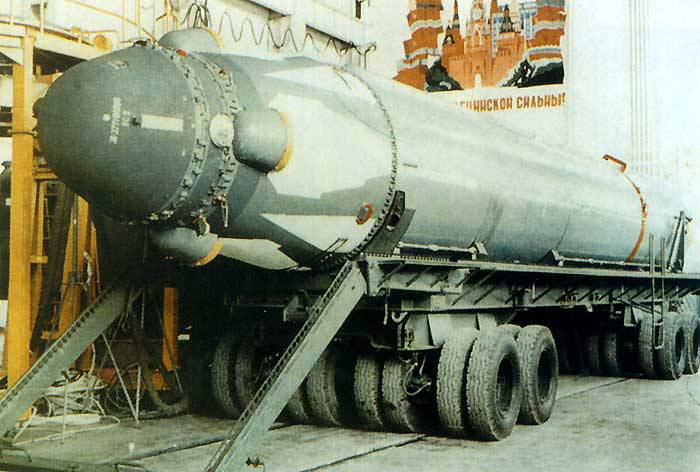
General view of missiles R-29РМ. Photo Rbase.new-facrotia.ru
To speed up the development of a new project, it was decided to use the existing groundwork for previous missiles of the P-29 family. In particular, it was necessary to apply the fulfilled decisions concerning architecture, configuration and materials of the case. At the same time, the P-29РМ rocket should have a number of differences. The main was the increase in the number of stages: now the submarine was proposed to arm with a three-stage rocket. The introduction of the third march stage required the use of original equipment placement ideas. So, the third step was proposed to be combined with the step of breeding, carrying warheads.
The missile of the D-9РМ complex was to receive the hull of the “traditional” P-29 design. Its main units were to be made of an aluminum-magnesium alloy. Lightweight body panels were used, joined by welding. Inside the hull should place a set of bottoms separating the steps and their fuel tanks. As before, the bottoms had a curved shape, which made it possible to place engines and other aggregates in the released volume. The tanks were separated by double bottoms. The compartments between the steps and between the tanks were not used.
The design of the first two stages of the rocket was borrowed from previous projects and did not undergo major changes. In this stage received new engines that differed from the previous main characteristics. In the lower bottom of the first stage was placed a liquid 3D37 engine with single-chamber marching and four-chamber steering blocks. Management on all three channels was proposed to perform by moving the steering chambers on existing suspensions. The second stage was to receive a single-chamber 3D38 engine with a swinging suspension. The two-stage propulsion engines were to use asymmetric dimethyl hydrazine and nitrogen tetroxide.

Scheme of the rocket P-29РМ. 1 - the head; 2 - fuel tanks 3 and combat levels; 3 - warhead compartment; 4 - engine 3-th stage; 5 - fuel tanks 2-th stage; 6 - engine 2-th stage; 7 - fuel tanks 1-th stage; 7 - engine 1-th stage. Figure Makeyev.ru
The third stage was made on the basis of units of the combat stage of previous missiles. At the same time, it was decided to convert the existing product into an additional means of overclocking the head part. On a single third stage casing, mounts were provided for a cruising fluid engine and warheads. In addition, the third stage was equipped with engines for maneuvering when moving warheads to the required trajectories. The third stage propulsion engine was rigidly mounted, and for maneuvering it was proposed to use the steering chambers for breeding. At a given point in time, the stage was supposed to shut off the pipelines and drop the main engine. After that, the stage was supposed to begin work in the mode of breeding. Marching and steering engines were to use common fuel tanks.
In the body of the rocket should have been installed elongated charges designed to separate the steps. With the help of an explosion in a certain plane, it was proposed to break the force elements of the body. Also, the separation should have contributed to the boost tanks. The separation system of the first and second stages were similar.
In the main compartment of the third stage it was proposed to place guidance equipment built on the same principles as in previous projects. The P-29PM rocket was to be controlled by an inertial system with astrocorrection instruments. This made it possible to follow the flight path and correct the course in a timely manner. The session of astrocorrection after the discharge of the second stage had to increase the accuracy to a certain extent. According to reports, the new guidance system has improved the accuracy of about one and a half times in comparison with existing missiles.
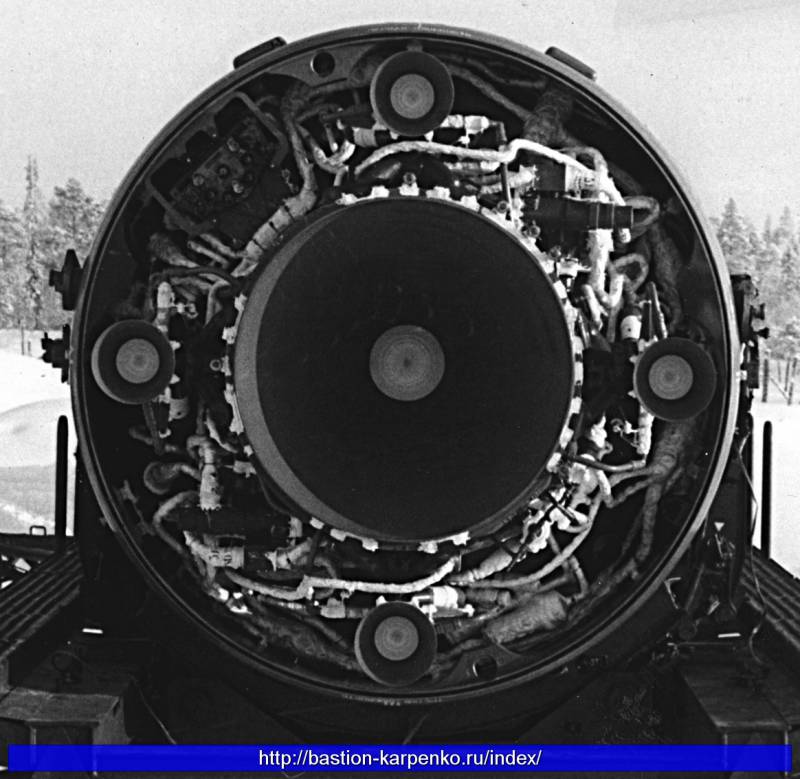
Engine first stage. In the center of the nozzle of the marching block, on the sides of it - the steering cameras. Photo Bastion-karpenko.ru
At the tail end of the third stage, which was placed in a conical niche of the second stage, fastenings were provided for accommodating special warheads. Within the framework of the new project, two variants of combat equipment were developed, with four and ten combat units. The blocks of the first type had a power of 200 CT, the second - for 100 CT. The original design of the third stage with the ability to maneuver to the end of the active part of the flight allowed to increase the size of the area of breeding warheads. Now it is possible to optimize the distribution of targets between missiles and their warheads.
Original layout solutions have significantly reworked the design of the rocket, but at the same time keep its size at an acceptable level. The P-29РМ product was supposed to have a length of 14,8 m and a maximum diameter of 1,9 m. The launch weight was 40,3 t with a maximum throw weight of 2,8 t. .
The maximum firing range of the new missile was determined at the level of 8300 km. The new guidance systems led to a reduction in the circular probable deviation (when firing at the maximum range) to 500 m. Thus, the power of the warheads fully compensated for the possible blunder and made it possible to effectively solve the set combat missions. Combat effectiveness also increased due to the possibility of attacking several targets with the dilution of military units within a large area.
As part of the D-9РМ missile system project, an updated set of equipment was developed for installation on submarines. A slight increase in rocket dimensions in comparison with the previous P-29P led to the need to change the size of the launch shaft. At the same time, despite the increased cross-section of the rocket, the diameter of the mine remained the same: the increase in the rocket was compensated by a reduction in the annular gap. At the same time, there was a need to increase the height of the launcher with the appropriate modifications of the carrier.
Together with the D-9РМ / Р-29РМ missile system, it was proposed to use the Space Gateway navigation system, which can significantly improve the accuracy of determining the coordinates of the submarine cruiser and improve the accuracy of firing. In addition, the carrier was supposed to receive a set of other equipment for calculating the flight mission of the rocket, entering data into the automation of the product and the subsequent control of shooting.
At the beginning of the development of a new project, the order of tests for a promising rocket was determined. During the first stage of inspections, it was proposed to carry out throwing mock-ups of models from a submersible stand. Then the tests were planned to be carried out on the ground range. The final stage of test launches was to be carried out from a new type of submarine carrier. A similar inspection procedure has already been developed and has been used in several previous projects, including the P-29 family.
The first stage of testing started at the very beginning of the eighties. Until the fall of 1982, nine throwing launches were conducted on the submerged stand, only one of which was not considered successful. The use of proven and tested units and technologies made it possible to complete the necessary throwing tests relatively quickly and without significant difficulties, check the launch of the rocket and then proceed to the next stage of inspections.
The venue for the following inspections was the Nenox site. These launches were carried out with shooting at different ranges, up to the maximum. 16 rockets were launched from the ground-based test facility, 10 successfully completed the task, hitting training targets. This opened the way to the final tests using the submarine carrier.
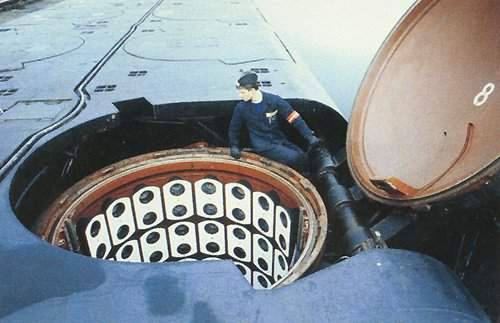
Launcher complex D-9РМ. Photo Rbase.new-factoria.ru
The development of the future carrier of the D-9РМ complex began even before the start of work on the complex itself. In accordance with the resolution of the Council of Ministers of 1 September 1975, TsKBMT "Rubin" was to create a new version of the nuclear submarine of the base project 667А. The project received the symbol 667BDRM and the cipher "Dolphin". It was originally planned that such a submarine will become the carrier of the D-9P complex with enhanced characteristics. After the start of work on the D-9РМ / Р-29РМ complex, the requirements for the new submarine have changed - now it has become the carrier of the new weapon system.
The submarines of the project "Dolphin" were supposed to be a further development of the boats of the previous project with a number of improvements. It was planned to reduce the main physical fields, install new equipment, and also ensure full compatibility with missiles of increased dimensions. Also, the technical task required to increase the capacity of boats when working in the Arctic. New requirements for the carrier of ballistic missiles led to the preservation of certain features of submarines, while other features of the appearance have been changed. In particular, the new submarines were to receive a higher superstructure behind the felling fence, under which launchers of increased length were placed.
The development of the 667BDRM project was completed in 1980. At the beginning of the 81, a new type of head-boat was laid, which was to become the first carrier of promising missiles. At the very end of 1984, the submarine missile cruiser K-51 “Named the XXVI Congress of the CPSU” (now “Verkhoturye”) was accepted into the Northern Fleet. Even before the final delivery of the fleet, the lead submarine of the project became a direct participant in testing new systems.
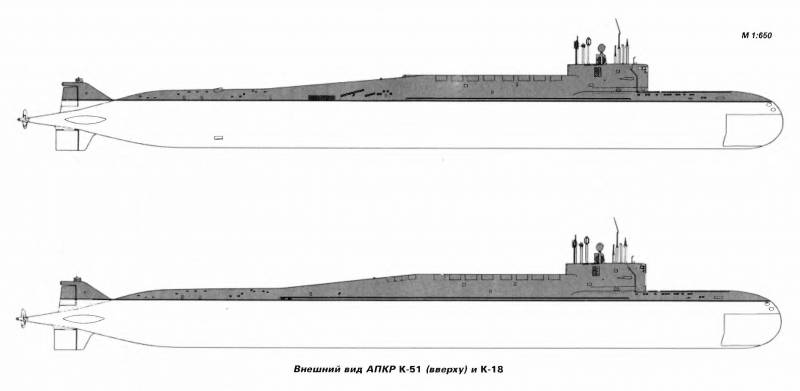
Submarine project 667BDRM "Dolphin". Figure Apalkov Yu.V. "Submarines of the Soviet Navy 1945-1991. Volume II"
Soon after the launch of the submarine K-51 came to the test with new weapons. Until the end of 1984, the boat "In the name of the XXVI Congress of the CPSU" went to sea several times for firing with experienced P-29РМ missiles. 12 missiles were used, 10 of which fulfilled the tasks. According to reports, two missiles launched at the minimum and maximum range. The remaining products were shot at the intermediate. 11 launches were performed from a submerged position. Six times the crew of the K-51 submarine carried out single firing, two more checks were carried out by volleys of two and four missiles.
At the end of 1984, the K-51 submarine named after the XXVI CPSU Congress became part of the Navy, but its missile system still needed to be checked. At the end of July, 85 held a two-rocket salvo, which was declared unsuccessful. On October 23 of the same year, two missiles were successfully launched. Soon the K-84 submarine joined the trials and became the second ship of its project.
Unfortunately, the general designer V.P. Makeev did not have time to study the results of a successful salvo with two missiles. October 25 1985 of the year he passed away. The D-9РМ complex with the Р-29РМ rocket was the last system created under his direct supervision. Other specialists were responsible for the further development of the P-29 family of ballistic missiles.
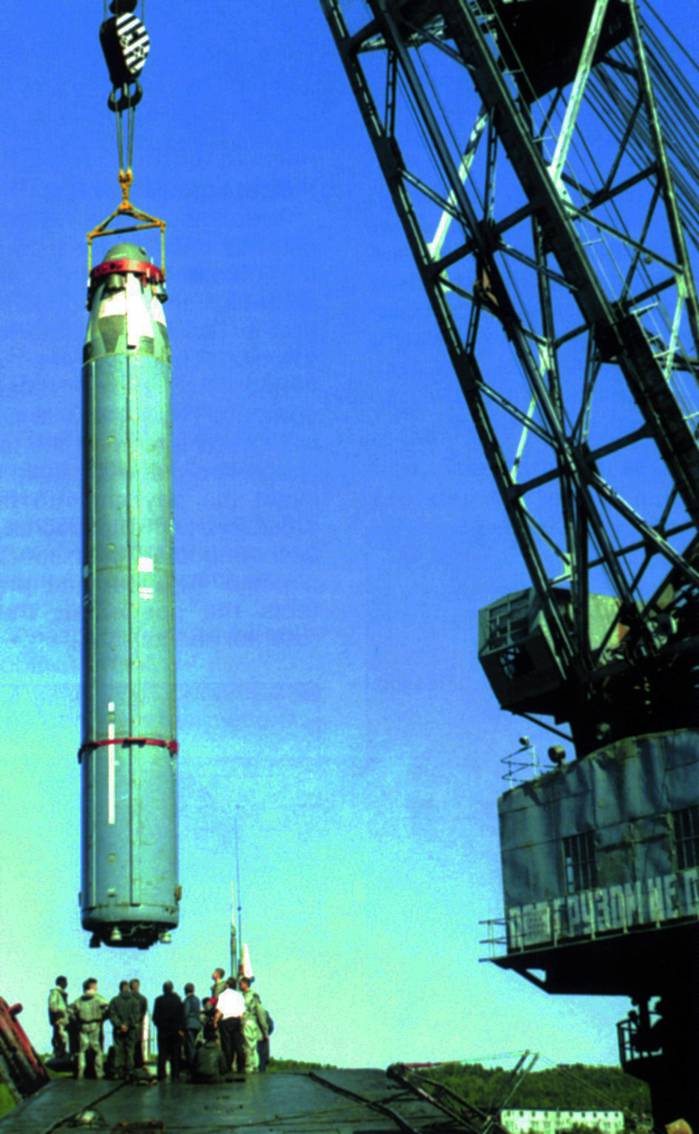
Loading missile R-29РМ into the launcher of the carrier. Photo Bastion-karpenko.ru
According to the test results, the new complex was recommended for adoption. In February, the Council of Ministers resolution on the adoption of the D-1986РМ / Р-9РМ complex with a missile carrying ten warheads was issued in February 29. A product with four warheads required additional verification. In the last months of 1986, three test launches of missiles with four warheads of increased power took place. In October, 87-th, this version of the rocket was also adopted. The fleet had the opportunity to begin the full-fledged operation of new weapons with enhanced characteristics of range and combat effectiveness.
In connection with the political and economic problems of the second half of the eighties, only seven submarines of the 667BDRM project were built to carry the R-29РМ missiles. Subsequently, the K-64 submarine was refitted under the 09787 project and became the carrier of a special underwater vehicle. Thus, at the moment, the Navy has only six “Dolphins”. Each such submarine carries 16 missiles and is capable of attacking targets using warheads of different power from 64 to 160. In total, the capabilities of such boats allow you to deploy up to 96 missiles with 384-960 warheads. This makes the submarine project 667BDRM one of the most important elements of the Russian strategic nuclear forces.
Shortly after the new missile system was put into service, work began on its modernization. In February 1986, an order appeared to further improve the D-9РМ complex in the framework of the project with the symbol D-XNUMHRMU / R-9RMU. The modernization consisted in increasing the survivability of the missiles when the enemy used nuclear weapons, improving control systems, etc. By improving the control equipment, it became possible to fire missiles in arctic regions, up to 29 ° north latitude, and a mode of flight along a flat trajectory with a shortening of flight time appeared. The R-89RMU missile was supposed to carry four warheads, and also had the ability to install ten warheads. The new complex was adopted in March 29.
The next updated version of the rocket, designated P-29RMU1, was distinguished by new combat equipment. According to reports, for this rocket was developed a new combat unit of increased security. This missile was put into service in 2002 year.
One of the most famous modifications of the P-29PM rocket is the P-29RMU2 “Sineva”. In the late nineties, another decision was taken to update the existing ballistic missile submarines. The Sineva missile received an updated hull design with different dimensions of the steps and a more sophisticated set of means for overcoming the missile defense, and was also equipped with a modernized control system. A satellite navigation system was added to the inertial equipment with astrocorrection. By 2004, tests of the new rocket were conducted, and in July the X-NUMX of the P-2007HRMU29 product was put into service. Began mass production of such weapons with the delivery of finished products to the fleet.
In 2011, the tests presented the P-29РМУ 2.1 “Liner” missile, which is a modified version of the “Blue”. According to known data, the new rocket differs from its predecessor by improved means of overcoming missile defense and the possibility of combining the combat load, depending on the task. The main characteristics at the same time remained at the same level. In 2014, the Liner was adopted and put into series.
There is information about the continuation of the modernization of products of the P-29PM family. A new rocket of the family could be a development known as the P-29РUMU 3 "Sineva-2". This version of the rocket will have to differ from its predecessors both in design and in combat load. Information about current work and plans for this project is not yet available. The emergence of new developments may lead to the rejection of the further development of existing systems.
In 1998 and 2006, two launches of the Stiel family of launch vehicles took place. This project involves the installation of a third stage on the P-29РМ rocket with a compartment for carrying spacecraft or other cargo weighing up to 70-90 kg, depending on the parameters of the orbit. Three versions of the “Calm” project were developed, differing in different design features as well as launch methods. If the “Smooth-1” and “Smooth-2” missiles were proposed to be launched from submarines or ground stands, the “Smooth-3” carrier was supposed to be a specially modified military transport aircraft. There were only two launches of carrier rockets "Shtil" with small spacecraft on board. After 2006, such products were not used.
The construction of seven submarines of the 667BDRM project has significantly increased the impact potential of the naval component of the strategic nuclear forces. Theoretically, it was possible to deploy 112 missiles with 1120 warheads to 29, but the actual number of weapons was always significantly less. Due to the presence of restrictive international treaties, the Dolphin boats were mainly equipped with R-448РМ missiles with four warheads and could simultaneously attack no more than 64 targets. After the K-96 submarine was refitted, the maximum number of deployable missiles and warheads was reduced to 384 and XNUMX, respectively.
Submarines of the project 667BDRM regularly go to sea for combat patrols. In addition, training launches of ballistic missiles are regularly carried out. Of particular interest are several similar training events held in the past. In 1989, the submarine K-84 (now Yekaterinburg) went to sea to participate in Operation Behemoth. The aim of the campaign was a volley with the use of all ammunition. For several reasons, several minutes before the launch of the missiles, there were problems that caused the destruction of one of the missiles with damage to the launcher and the submarine hull. The crew took measures to prevent the development of an emergency and soon returned to the base. At the end of the year a new attempt was made to execute salvo firing, which also ended in failure.
6 August 1991, the crew of the Novomoskovsk K-407 submarine completed its combat mission as part of Operation Behemoth-2. With an interval of 14 seconds between the launches, the submarine launched two combat missiles P-29РМ and 14 layouts. First time in stories the submarine fired a volley with the use of all the ammunition, as it should be in combat conditions.
At present, the P-29РМ ballistic missiles of several modifications are in service with the submarine forces of the Russian Navy. This weapon remains the most widespread and therefore the main means of delivery in the naval component of nuclear forces. So, there are still three submarines of the 667BDR Kalmar project with 16 Р-29Р missiles on each (48-336 individual targeting military units). In addition, the construction of new submarines project 955 "Borey". The fleet has already received three such boats, each of which carries the X-NUMX P-16 “Mace” missiles (30-6 warheads on each).
Simple calculations show that the Dolphin-type submarines remain the main carriers of fleet strategic weapons to this day. In addition, they can be ahead of other submarines in the number of deployed warheads. Thus, the nuclear submarine of the 667BDRM project is deservedly considered to be the main strategic missile cruisers, and the R-29РМ missiles retain their most important position in the structure of our country's nuclear armaments. Over the next few years, the D-9РМ / Р-29РМ missile systems will maintain their position, after which they are likely to gradually give way to newer systems and their carriers.
Based on:
http://makeyev.ru/
http://rbase.new-factoria.ru/
http://bastion-karpenko.ru/
http://deepstorm.ru/
Apalkov Yu.V. Submarines of the Soviet Navy 1945-1991 Volume II: - M: Morkniga, 2011
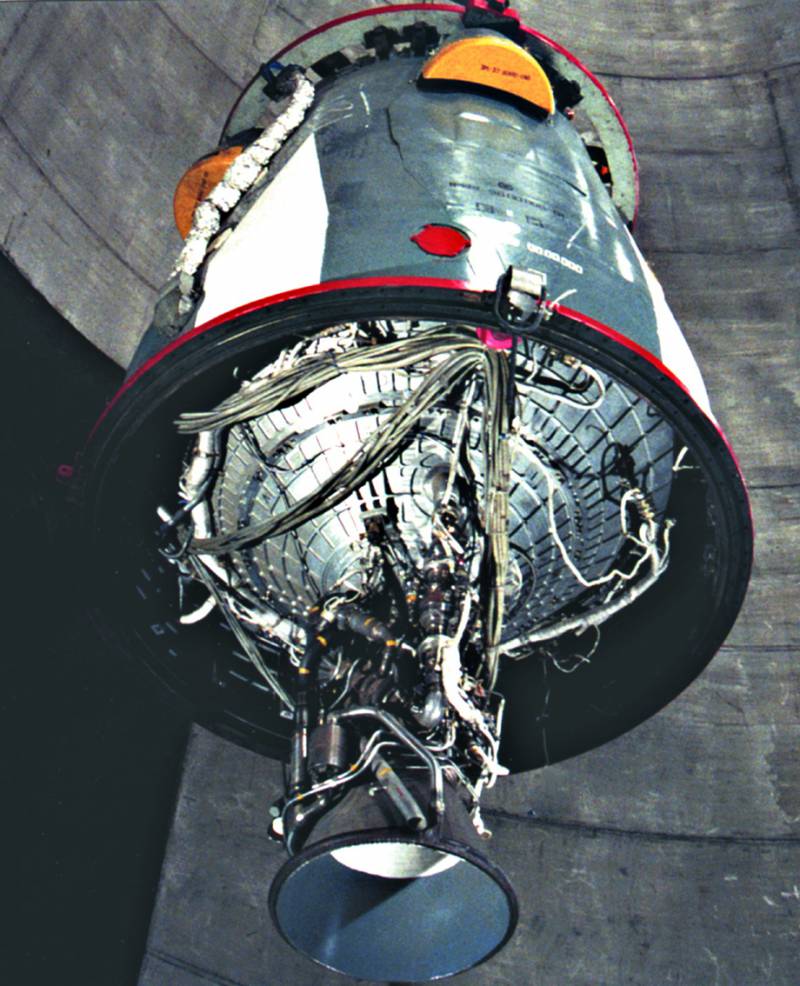
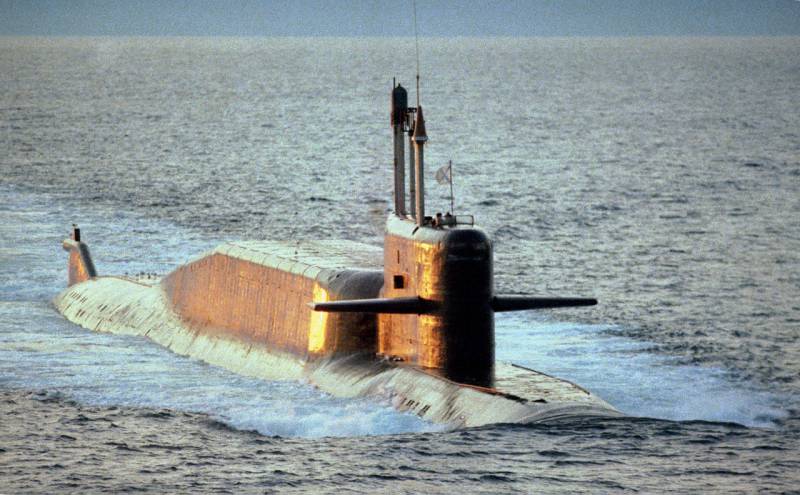
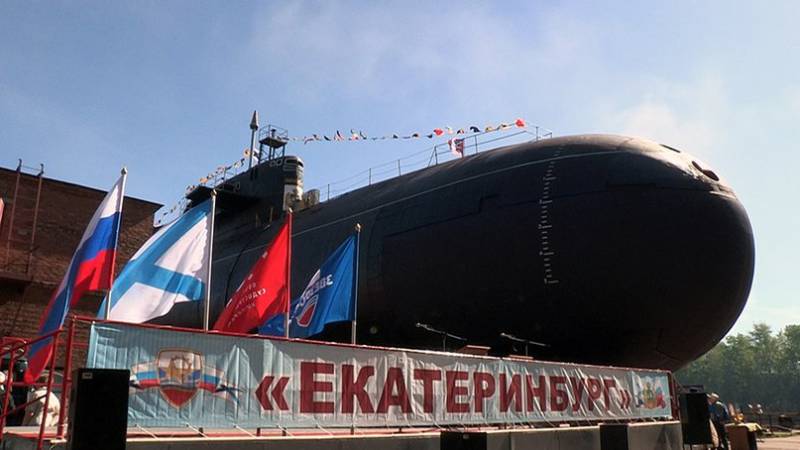
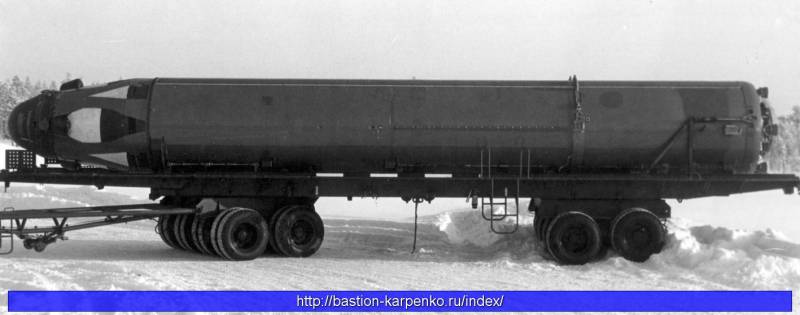
Information